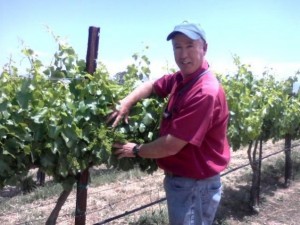What Happens in the Vineyard After the Harvest?
Vineyard maintenance after the harvest is very important. Harvest time in a vineyard is both an end and a beginning. The grapes have been picked, signaling the end of the growing season, but not the end of the work in the vineyard. The grapevines have begun to go dormant and now we are preparing for the next year.
Four Vineyard Maintenance Tasks After the Harvest
1. Removing the bird netting: this is the first task. This is time consuming, but has to be done in order for other important tasks that must be completed.
2. Soil Analysis: After harvest, we like to conduct a soil analysis from soil samples. This will give us a battle plan for the next growing season. The soil samples with give us information on the health of the vineyard’s soil. Nutrients are very vital to healthy soil. Nutrients that we are speaking of are the following:Calcium
- Potassium
- Phosphorous
- Nitrogen
During the soil samples if any of these nutrients are depleted, late fall is the best time to add them back so that the vines can absorb them prior to going dormant. The nutrients can be delivered through “fertigation”, the irrigation system or spread across the soil.
3. Planting a Cover Crop: In late fall, we also start the process of planting a cover crop. Cover crops are planted between the vine rows which helps to build organic matter, controls erosion, suppress weeds, improves soil structure and reduces nutrient loss. The timing for this is very important. Without proper rain, the new seed won’t germinate.
4. Trellis and Equipment Maintenance: Other post harvest activities include basic maintenance such as adjusting or replacing wire trellises and metal stakes. Equipment maintenance is also done at this time. This would include tractor service and cleaning any spray equipment.
In the end, vineyard maintenance after the harvest season is all about getting ready for the next vintage. “The most important thing a grower can do once the grapes have been harvested, is to look at the overall health of the vines and soil. The cyclical nature of wine grape growing means there’s never really any down time.





